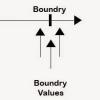Automation
Articles
 |
Using Equivalence Partitioning and Boundary Value Analysis in Black Box Testing Equivalence partitioning and boundary value analysis are two specification-based techniques that are useful in black box testing. This article defines each of these techniques and describes, with examples, how you can use them together to create better test cases. You can save time and reduce the number of test cases required to effectively test inputs, outputs, and values. |
|
 |
Test Faster: How We Cut Our Test Cycle Time in Half In just a year, one test team reduced its test cycle by more than 50 percent. It took analysis, planning, and effort—first they looked into how they spent their time, and then they questioned whether they could reduce time in any of those areas. Once they knew where they could be more efficient, they could start tackling their blockers. Here's how you can, too. |
|
 |
Getting Your New Web Test Automation Up and Running So you have the responsibility of a new team and getting an entirely new web automation test infrastructure up and running. Here are the hurdles, pitfalls, and successes one QA director encountered, along with the milestones the team defined to measure success, how they migrated their existing manual tests, and the path they took to establish the new web test automation initiative. |
|
 |
Evolve Your Mobile Usability Testing Methods Today’s mobile behaviors and expectations have radically changed, a result of the continuous evolution of mobile technology and the myriad new ways users can now interact with mobile. Because of this advancement in technology and user behavior, testing organizations must also advance their mobile testing solutions to ensure they continue to deliver the most intuitive, up-to-date experience possible. |
|
 |
Shifting Testing Left Bakes In Quality from the Start “Shift left” is one of the latest buzz terms in software testing. Movements like agile and DevOps recommend that testers shift left, but what does that mean, exactly? Here's how one tester became a believer in the shift-left movement; how he got his team's developers, analysts, designers, and managers on board; and how his entire organization has benefited from the shift. |
|
 |
Reporting Automated Test Results Effectively The modern iterative software development lifecycle has developers checking in code to version control systems frequently, with continuous integration handling building and running automated tests at an almost equally fast rate. This can generate an enormous amount of test data. Here’s how you can ensure you are reporting results effectively across your team and realizing all the benefits of that information. |
|
 |
5 Ways to Optimize Tests for Continuous Integration Many teams have existing automated test suites that are not included in a continuous integration program. Maybe the tests take too long to execute, or they are not reliable enough to give accurate results. Here’s how to assess your test suites in terms of value added and time to execute, along with five proven strategies to optimize those suites for CI. |
|
 |
Fault Injection Testing for an IoT Device If someone says a feature is not testable through the methods we use, it does not absolve us from the responsibility of testing; that's still our job. When this team was given a new connected device to test, they realized their existing functional testing skills wouldn't be sufficient to test the product's core algorithm. So the team got creative, learning the source code and introducing fault injection, figuring out new ways to test. |
|
 |
Shifting Testing Left Is a Team Effort There is a lot of talk in the testing world about shifting left. Basically, “shift left” refers to moving the test process to an earlier point in the development process, independent of the development approach. This article explores a case in which shift-left has been applied, and the lesson is that shifting left cannot be achieved by testers alone—it must result from a team effort. |
|
 |
Testing to the Usability Standards Our Customers Expect Allowing minor defects to be included in releases impacts our customers’ perspective on software professionalism. We’ll never catch every weird, obscure bug, but there are some design elements where they tend to lurk. By focusing our testing efforts on these areas—or at least not neglecting them—we can catch more issues before our customers do. |
Pages
Recommended Web Seminars
| May 23 | How Generative AI Boosts Speed and Quality in Software Testing |
| On Demand | Building Confidence in Your Automation |
| On Demand | Leveraging Open Source Tools for DevSecOps |
| On Demand | Five Reasons Why Agile Isn't Working |
| On Demand | Building a Stellar Team |











